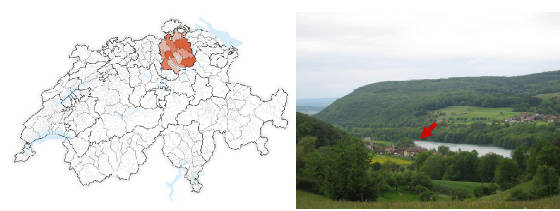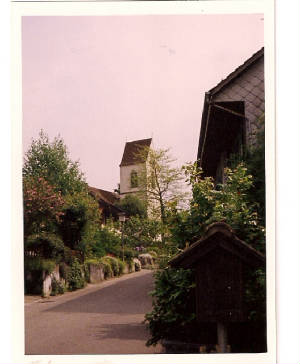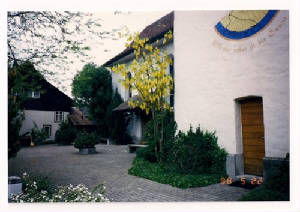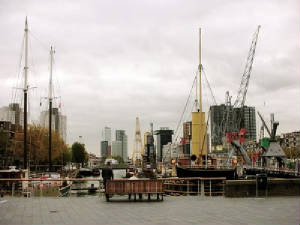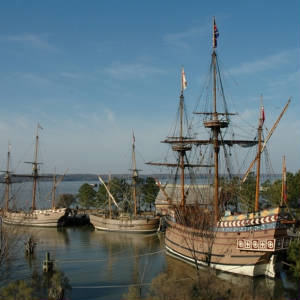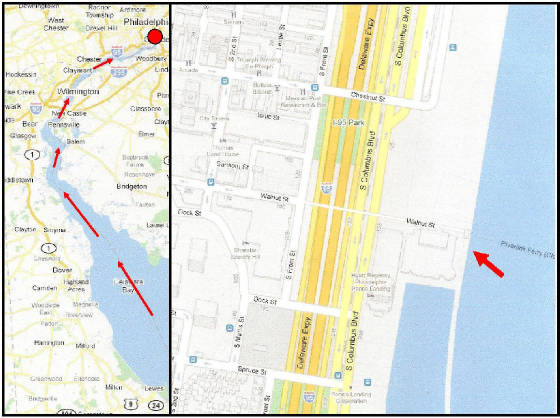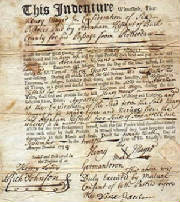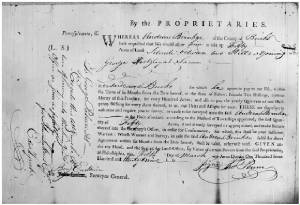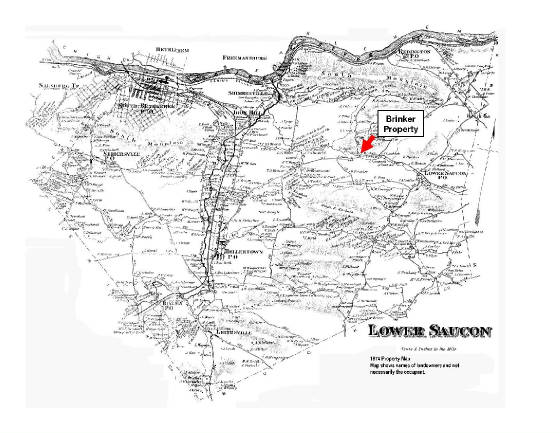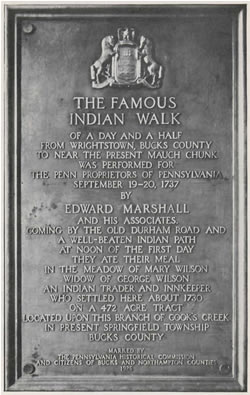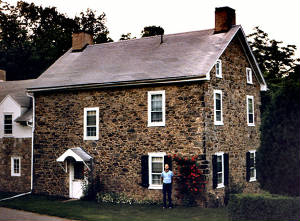|
|
|
| The village of Elsau, Switzerland |

Navagation Bar
Click on the name below to go to their page

Second Spouse

To really know someone that lived
some 300 years ago, we must first understand who they were, where they came from, and what events shaped their lives.
What made them do the things they did? These things are what actually bring that person back
to life, rather than being just a collection of courthouse documents.
The young life of Andreas
Andreas Brungger was born July 9, 1699 in the Canton of Zurich, (state
or territory) Hamlet of Rumikon (county or township),
Village of Elsau, in Switzerland, a small village in the northeast foot hills of the Swiss Alps, on the
banks of the Rhine River, near the border of Germany.
He was the third son of Hans Konrad Brungger and his wife Maria Weidmann.
(Source:Globally unique Identifier: 4D0DBDBA-F3D6-4D08-A53E-BDED0FF30611
Record ID Number: MH:IF1072558)
Though born in one of the most beautiful villages in the world nestled in the foot hills of the Swiss Alps,
on the banks of the Rhine River, Andreas' life was not going to be as beautiful, for in 1702 at the age of three Andreas lost
both of his parents.
Source: Globally unique Identifier: 63018799-FC5C-4792-9321-EB1C473984E5 Record ID Number:
MH:IF1074046--- Globally unique Identifier: 53ED5264-10F0-4FBE-A5C0-CE17A2DD7776 Record ID Number: MH:FF15853
At this time it is unknown to
this author how they both died in the same year, whether some type of sickness or victims of the war. It is also unknown who
raised Andreas age 3, and his brothers Hans Jacob age 11, Hans Konrad Jr. age 9, and Hans Ulrich age 2.
Andreas was raised in the very heart of one of the worst conflicts in world history; a conflict that lasted some
three hundred years.
Corruption had deprived the Roman
Catholic Church of its credibility during the last centuries of the middle ages. The reformation of the church in Switzerland
by Huldrych Zwingli, John Calvin and Guillaume Farel came a little later than the reformation in Germany
by Martin Luther ... but it was much more radical. As in Germany,
the reformation began in Switzerland as a religious renewal
or revival movement and ended in a deep political division between the progressive cities of northern and western Switzerland
and the conservative rural areas of central Switzerland.
The years between 1520 and 1550 were some of the most tumultuous in history. The course of Western civilization
was dramatically altered. During this period, the Swiss Reformation exploded and sent forth waves that eventually reached
much of the world, including, in later years a profound influence on the development of America.
The first key center for Swiss Reform was Andreas's birth place, the city of Zurich, under its brilliant leader
and pastor Ulrich Zwingli. His sermons were geared to the common person and so emotionally moving that one hearer said
he "felt as if lifted up by the hair and suspended in space." Zwingli had searched the scriptures and questioned
many of the major teachings of the church of the middle ages. He rapidly instituted sweeping reforms in the early 1520s.
The accepted ways and world views of the day were challenged and changed. Inevitably, conflict erupted over
these drastic changes. A major crisis for Zwingli developed from among his most gifted students. They rejected
infant baptism as unbiblical and re-baptized themselves as adults. For this they were called "Anabaptists."
The Zurich City Council held several public debates and rejected the views of the Anabaptists. The Anabaptists
were ordered to conform or get out of Zurich, but they would neither submit nor leave. So on January 5, 1527,
the city council drowned Anabaptist leader Felix Manz. "Against the waters of baptism he sinned," they said, "so by water
shall he die."
Manz was only the first of this new movement to be killed. A wave of persecution against the Anabaptists ensued
that lasted for generations. The Anabaptist movement, despite losing many of its best leaders to persecution, survived
and spread. This reformation divided Switzerland in two fractions: the progressive cities
of Zurich, Basel, Berne, Geneva, and Neuchâtel turned towards the new confession and enforced conversion within their
cities and also in their subjected territories, while conservative central Switzerland, including Lucerne, remained Catholic.
This controversy between, Andreas's home canton of, Zurich and
Central Switzerland eventually lead to the four Civil Wars of 1529, 1531, 1556 and the Civil War of 1712 in
which Andreas grow up in as a teenager.
In 1655, during Andreas's father's youth, the Canton of Schwyz, which had elected to remain Catholic
in 1531, began prosecuting those Protestant families who had remained in Schwyz. Some were turned in to the Inquisition in
Milan; some were beheaded, and some fled to the Canton of Zurich. The property of those who fled to Protestant Canton of Zurich
was confiscated. Zurich then demanded compensation for this property; but the Canton of Schwyz demanded the return
of the refugees. Zurich began to urge the canton of Bern to declare war on the Catholic Cantons (Schwyz and its
allies Uri, Unterwalden, Zug and Lucerne).
Protestant resentment of the Catholic Cantons grew as their own wealth;
numbers; and power grew, but their representation in the Diet did not. Two votes for each canton assured the seven Catholic
cantons political control over the four Protestant members, (two others were bi-confessional). Wars nearly broke out again
in 1664, 1694 and 1697, just two years before Andreas's birth.
These struggles continued until, on July 24, 1712, all out civil war began.
Andreas was twelve years old. During this period of time the cantons of Bern and Zurich launched a huge expulsion of the Anabaptist
people and hired Ritter & Co. to assist in shipping them to the American colonies. This expulsion lasted through the last
part of 1735, which is the year that Andreas arrived in America, but the battle did not stop there. During
the period between 1821 and 1899, there was 5,079,362 German immigrants that landed in
American ports, which was the third sweep of German refugees to flee to America.
| Elsau Evangelical Reformed Church |
|
|
| Click to enlarge |
This is the church that Andreas's family attended before they emigrated to the U.S in 1734. The
church is still in use today and well maintained. The oldest part dates back to 1250 AD.
Authors Note:
In all the years that I have studied the Brinker Family
History, I always saw Andreas as a man that came to America because of the opportunities it offered. When I started
studying his background and found all of this, it changed my whole outlook on who this man was. Andreas Brinker was a German
refugee orphan, that saw many of his friends and neighbors imprisoned and some beheaded and then he himself (expelled
from his own country) and his family's land confiscated, simply because of his beliefs.

Begining his family
On April 26, 1720, at the age of twenty Andreas married Regula Herter ,the twenty- three
year old daughter of Jurghans Herter and Barbara Gutherz, in their home town of Elsau, Switzerland. Regula was born
Sept. 8, 1695.
(Source: Globally unique Identifier: 13BEAD47-8478-405C-AB07-E49A78584B26
Record ID Number: MH:FF15815)
Their first child Kind Brungger was born on April 29, 1721 and died two days later on May 1, 1721. (Source: Globally unque Identifier: 62CDBE85-C927-44F0-9B1D-E68738AC6FCE Record ID Number:
IF1072838) ---(Source: Globally unique Identifier: 302FE111-C3CF-49E5-9930-A57A3449844A
Record ID Number: MH:IF1072839)
They later had five sons and one daughter.
Due to the pressures of Switzerland's economic depression of that period and the extreme political and religious
oppression being placed on people of the Protestant faith, Andreas and his family left Rumikon. The Swiss archives, in Zurich,
Switzerland maintain records of the immigrants leaving each canton (state or
territory).
According to these records Andreas and his family left Runikon on Nov. 4, 1734. (Source: Letter to Barbara J. Brinker of San Francisco,
CA from Swiss Archives, dated 1986)
Like thousands of others fleeing this oppression, they traveled by wagons that contained all of their possessions,
along the banks of the Rhine River. Small paths led into the river valley system of roads and bridges going to Rotterdam,
Holland (approximately 375 miles). It
was customary for several families and friends to band together for the trip, which would take four to six weeks. There were
many hazards and delays along these roads and fees and tolls were demanded at each of the twenty-six custom houses along the
Rhine. The elected officials, at their own discretion, could forbid departure of any person and have the immigrant seized
and imprisoned; many considered immigration as a lesser form of treason, which was punishable by death.
It was not a journey to be taken by one person or one family. Passengers on the immigration ships often came from
the same areas of the country; many times from the same town; and very frequently were related to one another. We do not know
exactly how long this journey took them, but we do know that all ships from the European continent (bound for England's North
American colonies), were required to visit an English port to register their cargo before crossing the Atlantic. Andreas and
his family boarded the Ship Mary (Brigantine) that departed from London, England's Port of Liverpool and arrived in Philadelphia,
Pennsylvania on June 28, 1735. We also know that the longest recorded voyage was 89 days; this means the family was
in transit for about five months between the time they left their home and the time they set sail for America.
| Rotterdam Shipping Decks Since the 1300s |
|
|
| Click to Enlarge |
Neverthess, they ended up in Rotterdam, Holland where they no doubt found the surroundings strange and very resentful.
This was a flourishing trade center established in the 1300s, with cluttered docks; shipping facilities; bustling street markets; and
very crowded living quarters. Many immigrants quickly realized that the little substance they had gathered for the voyage
to America could quickly dissipate. Many, who left their homes in solvent financial condition, departed Rotterdam without
any funds and very few possessions.
The addition of thousands of refugees, fleeing from districts their families had inhibited for centuries, placed
many great financial and infrastructure strains on the city of Rotterdam, causing the residents; merchants;
and shippers to inhumanly look upon these foreigners only as living cargo and accommodated them just like any common
cargo or live stock.
| 1700s Brigantine Ships |
|
|
| Click to Enlarge |
We do not know how they raised the three pounds of English currency, which was the average cost for
a ship's passage but, sometime around the first of April, 1735, after spending weeks in Rotterdam, Andreas and his family
boarded the ship Mary (Brigantine), with Captain James Marshall and set sail for Philadelphia. The ship made its stop at London,
England, which was required by law, to
register its passengers and cargo and departed Liverpool for Philadelphia, Pennsylvania.
Authors Notes: These ships ran seasonally and the departure of the Mary was a very early departure most started
in June each year.
The average eight to ten week voyage was very difficult. Many who had never sailed before crowded the small
vessel that had poor sailors and horrible accommodations. They lived in extremely cramped space for up to 89 days, with
five children; ranging from 4-11 years of age and a new born baby, holding fast to the trunks, and baggage
that contained all their worldly wealth. They were fortunate to even find deck space because these tiny ships were only
88-113 feet long and were always extremely over loaded. The Mary had 41 passengers plus the crew and cargo.
|
|
| Fishbourne's Wharf - Philadelphia, Pennsylvania |
As the ship entered the Delaware Bay, they traveled up the Delaware River to Philadelphia where:
On June 28, 1735 they docked at Fishbourne's Wharf, just below Walnut Street, about where the Hyatt Regency Hotel
at Penn's Landing is today. (Source: Pennsylvania
Archives, Second Series, Vol. 8, p. 186-189)
Historic Note: Four years before Andreas's
arrival, Fishbourne's Wharf was the scene of Philadelphia's worst fire in history, and as a result of this fire and one in
his home town in England, in 1736 Benjarmin Franklin formed the first Vol. Fire Department in the world, which today
is found in 89% of all communities worldwide.
| Brig Mary Passenger List |
|
|
| Click to enlarge |
According
to the passenger list; 41 persons, (including Andreas; his wife; five sons and his daughter) boarded the ship in Rotterdam;
only 39 arrived in Philadelphia. We know that Andreas’s daughter,
Mary Elisabeth and others became very ill in route sometime between their departure in April and June 28, 1735
Mary
Elizabeth (age 4), died on the ship but, this author has found no record of the other missing person.
The
other passengers aboard the Brigantine Mary included the families of: Melchior Scholtze; Zacharias Friedrich; Heinrich
Boschart; Peter Schwaab; Nicklaus Bütekofer; Heinrich Weuhrman; Johannes Wuhrman; Andreas Widmer; and Solomon Rückstul.
Upon
arrival, Andreas and the other passengers were immediately taken to the courthouse which was located on Second Street, two
blocks from Fishbourne’s Wharf, were they took the Oath of Allegiance.
- "I, ---, do solemnly & sincerely promise
& declare that I will be true & faithful to King George the Second & do sincerely & truly Profess, Testifie,
& Declare that I do from my heart abhor, detest, & renounce as impious & heretical that wicked Doctrine &
Position that Princes Excommunicated or deprived by the Pope or any Authority of the See of Rome may be deposed or murthered
by their Subjects or any other whatsoever. And I do declare that no Foreign Prince Person Prelate State or Potentate hath
or ought to have any Power Jurisdiction Superiority Preeminency or Authority Ecclesiastical or Spiritual within the Realm
of Great Britain or Dominions thereunto belonging."
Both the shipping clerks in London and the
English speaking record clerks of Philadelphia were unable to speak German, thus many German names were either misspelled
or changed to an English dialogue. Therefore this is likely the place that the Brungger name was changed to the English dialogue
Brinker that we know today. Because of these errors and changes, we can not know for sure but, Andreas may have been the first
Brinker to be recorded in the United States.

Settling in the new world
The
Pennsylvania Early Census Index shows Andreas
and each of his family living in Philadelphia Township, Philadelphia County, in 1735, but we do not know the date the census was enumerated. We do know he arrived
there June 28, 1735.
(Source: Jackson, Ronald V., Accelerated Indexing
Systems, comp.. Pennsylvania Census, 1772-1890 [database on-line]. Provo, UT, USA: Ancestry.com Operations
Inc, 1999)
No records, that this author has found , show evidence of the exact location were Andreas and
his family lived in Philadelphia, but we do know a few indicators.
| Example of Indenture |
|
|
| Click to enlarge |
(1) There was two ways for these Immigrants to pay for their journey to America. They could pay
cash, or they could indenture themselves to a merchant or land owner (much
the same as slavery) agreeing to work for them for a period of 4-7 years to pay
for their passage.
Looking at the dateline of Andreas's movement there is no indication of him being bound to an Indenture
because he moved to Bucks County within a few months and was granted land there within three years of his arrival
in America.
(2) We know from American history that there was still some religious strife in Philadelphia
at that period of time. To avoid this strife and to make communication easier, most of these German speaking Protestants
moved into one area on the northwest side of Philadelphia, called Germantown.
The Germantown area of Philadelphia is one of Philadelphia's oldest settlements. It was originally
settled by Mennonite and Quaker (German speaking) immigrants from Holland; Germany; and Switzerland in 1683, that were attracked
to Philadelphia by William Penn's promises of religious tolerance.
We also know that the Mennonites and Quakers split in 1690 because the Mennonites wanted to have
a minister in their Meetings and the Quakes did not. Because of this split we can now establish
that Andreas and his family were Mennonites, because we have a record of Catherine (his son's wife) promising 1
pound per month for the support of two Ministers on August 1, 1790.
| Mennonite Meeting House |
|
|
| Click to Enlarge |
At 6119 Germantown Avenue in Philadelphia's Germantown, stands the first Mennonite Meeting House
in America organized in 1693. This building replaced the original log cabin in 1780s and is still being used today. This area
was and still is one of the largest communities of Mennonites in the country.
(3) Some time between his arrival and March 5, 1739, (when he received the Warrant for his land) Andreas had
to travel to Bucks County in order to have found this land. This is a quote taken from PHILADELPHIA REFLECTIONS--A History of Bucks Co.
"After Penn's death, however,
and particularly from 1726 to 1736, a major wave of German and Scotch-Irish immigration created an overwhelming population
pressure on the seaboard areas, resulting in much unauthorized pioneering and settlement. Since William Penn spent only a
few years in the colonies his agents chiefly James Logan, had long set the tone."
Thus Andreas may have already settled
on this land prior to recieving the Warrant.

Moved to Bucks County
It's unknown what Andreas did to feed his
family during this period of time in Philadelphia but, we do know that his occupation was that of a farmer and grain miller.
Four years after his arrival in America, on March 5, 1739, Andreas received this warrant for fifty acres of land
located in Bucks County, Pennsylvania.
(Source: Land Warrant of Andreas Brinker, Bucks Co. Pennsylvania. Family History
library microfilm 021686 (scanned November 1, 2011 by Becky Wiseman at kinexxions.blogspot.com)
By the proprietaries.
Pennsylvania, SS. Whereas Andreas Brinker of County of Bucks hath requested that We would allow him to take up
Fifty acres of Land Situated between to Hills adjoining George Hertzley at Saucon in said County of Bucks for which he agrees
to pay to our Use, within the Term of six Months from the Date hereof, at the Rate of Fifteen Pounds Ten Shillings, current
Money of this Province, for every Hundred Acres; and also to pay the yearly Quit-rent of one Half-penny Sterling for every
Acre thereof, to us, our Heirs and Assigns for ever: These are there to authorize and require you to survey, or cause to be
surveyed unto the said Andreas Brinker at the Place aforesaid, according to the Method of Townships appointed, the Quantity
of Fifty Acres, if not already surveyed or appropriated, and make Return thereof into the Secretary's Office, in order for
Confirmation; for which this shall be your sufficient Warrant: Which Warrant and survey, in case the said Andreas Brinker
fulfill the above Agreement within six Months from the Date hereof, shall be valid, otherwise void. Given under my Hand, and
the Seal of the Land-Office, by Virtue of certain Power from the said Proprietarys, at Philadelphia, this Fifth Day of March
Anno Domini One Thousand Seven Hundred and thirty nine. Signed Thos Penn
To Benj Eastburn, Surveyor General.
(Note written on the left side of the paper reads)
To George Palmer DS
Execute this and make Return of Survey into the surv Gen'l office as Soon as possible.
for John Sukins Esq
Edw Lynch
Author's
Notes:
Land warrants were the first document issued to a person who wanted to obtain land from the state. A land warrant gave
the applicant permission to have the land surveyed. When the survey was returned to the state with a fee, a patent was issued
to the individual. There can be many years between the issuing of a warrant and the issuing of a patent, and it may not have
been issued to the same person. A patent is the equivalent of a deed between the state and an individual. All land transfers
after a patent was issued would be by deed. Most deeds (but not all) were recorded in the county courthouse of the county
that had jurisdiction at the time the deed was recorded. This may be the current county, but it could also be any of the parent
counties for a
particular location. Some deeds were never recorded, and some may have been recorded much later than the date of the
deed, some more than 100 years later. Copies of the original documents are available through the PA State Archives in Harrisburg. In
most cases, the documents do not include the signature of the person warranting the land. Many of the warrants include the
year the land was first settled (listed as the date when interest was to start, almost always on March first). This, however,
may not be the date the warrantee settled on the land if the land had changed hands before a warrant was applied for. (Source: Warranties of land in several counties of the state of Pennsylvania 1730-1898,
Pennsylvania archives Third Series Vol.25)
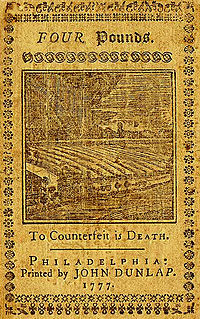
|
| Click to Enlarge |
According to this warrant Andreas was to pay "fifteen pounds ten shillings of currant money
of this providence". This is an example of the currency used in Pennsylvania at that time. This is a four pound note.
Notice under the picture is the words "To counterfeit is death".
| 1874 Property Map of Lower Saucon Twsp. |
|
|
| Click to Enlarge |
This is the 1874 Property Map of Lower Saucon Twsp. Bucks County. Pennsylvania. When expanded this map
still shows this property to be owned by J. Brinker, (which would be Andreas's son Jacob) who inherited a portion of his father's farm ten years prior to this map. The elevation shown on the map also matches
the land description given in Andreas's Warrant, "Fifty acres of land situated between to hills adjoining George Hertzley
at Saucon in the said County of Bucks".
Unbeknownst to Andreas, the three Penn brothers who owned this land were in extreme
financial trouble, unlike their late father William Penn, who worked so hard to settle
peacefully with the Indians. On September 19 -20, 1737, just two years before
Andreas bought the land, the Penn brothers had cheated the Indians out of 1,110 acres of land through a scheme
know as the Day and a Half Walk. This walk took place just ten miles south of Andreas's land and the local Indians
began to distrust the white settlers. As the anger grew Indians began brutal raids on the settler's homes. It was
perhaps due to their growing anger towards the settlers,who had swindled and displaced them, that so many brutal raids upon
barely defended homesteads occurred, inflaming racial hatreds between the whites and natives further. By 1755, over
50 settlers had been killed in Indian attacks within the bounds of the original Walking Purchase, including Edward Marshall’s
wife, eldest daughter, and son. These raids continued for many years until they finally started the French and Indian War
that lasted from 1754-1763.
At the time of his purchase Andreas' land was wilderness owned by the Penn Brothers. Sometime before 1737,
Nathaniel Irish established a farm, built a grist and saw mill, and opened a land office for William Penn. He is considered
the first European settler in Lower Saucon Township. His land later became known as Shimersville. Irish was the first justice
of the peace in the area, and the first “King’s Highway,” from Philadelphia to the Lehigh Valley, built
in 1737, led to his property.
Lower Saucon Township was chartered in 1743, when it was still a part of Bucks County. It was established in
the rich farmland along the Saucon Creek. The name is of Native American origin, from sakunk, meaning “at the
mouth of the creek.” (Source: Lower Saucon Township, Northampton
County, Pennsylvania History)
From the time of this purchase in 1739, Andreas and his five sons developed and farmed this land until about
1744 when his two oldest sons Henry and Conrad left home to settle in Frederick County, Virginia, leaving Ulrich, Jacob and Abraham to help run the farm.
In route to Virginia, on June 15, 1744, his son Henry married Anna Catherine Kreutzberger in Stouchberg, Berks County, Pennsylvania. (Source: Christ Luthuren Church in Stouchsberg, Berks,
Pa.)
On
___,1745 Andreas’s first grand daughter was born in Frederick Co. Va. to his oldest son Hendrick Brinker and Anna Catherine
Kreutzberger.
On June 4, 1746, the Northampton County land warrant records, (1734-1769, FHL microfilm # 021686)
shows that Andreas took a warrant for twenty-five acres adjoining his original farm.
Much confusion among genealogists is caused by this Warrant because it is filed in Northampton County. Andreas
did not move, this Warrant was filed as normal, but eight years later, Bucks County was divided and the area of Bucks County
where Andreas's land was located became part of Northampton County. The land warrant records from 1734-1769 were kept in Northhampton
Co.
On Sept. 29, 1746 Andreas's grandson George Madison Brinker was born in Frederick Co. Va. to his oldest son Henrick
Brinker and Anna Catherine Kreutzberger.
On
___, 1748 Andreas’s grand daughter Elizabeth Brinker was born in Frederick Co. Va. to his oldest son Hendrick Brinker and Anna Catherine
Kreutzberger.
On
____, 1751 Andreas’s grandson Henry Brinker Jr. was born in Frederick Co. Va. to his oldest son Hendrick Brinker and Anna Catherine Kreutzberger.
On ____, 1754 Andreas’ son Abraham Brinker married
Elizabeth Bessen in Lower Saucon Township, Bucks Co. Pa.
In 1755 Andreas's son Jacob married Susannah Hinkle in Northampton County, Pennsylvania, which indicates he was still living on or near his father's
farm. (Source: Globally unique Identifier: C884B883-1A38-4DB8-954E-16E487F78468 Record
ID Number: MH:FF15791)
Apparently some time in 1755 Jacob
purchased land in Sciota,
Hamilton Twsp. Northampton County, because a year
later in 1756 Jacob's daughter Anna Margaritha was born in Sciota, Hamilton Twsp. Northampton County about twenty-four miles
from his father's home.
Anna Margaretha was born in the family's log cabin across the road from Brinker's Mill. Source: (Biographical and Historical Cyclopedia of Westmoreland County, 1890, p. 430.)
| Brinker's Mill |
|
|
| Click to Enlarge |
The Hamilton County Historical Society is not specific about the year, but list Jacob Brinker as building Brinker's Mill (Today a Pennsylvania State Tourist attraction and Park) in
the 1750s. It may be that Andreas financially helped Jacob build the mill, because a few years later, we find that,
in his Will, Andreas forgave Jacob the balance of a debt of ten pounds as a present.
On December 7, 1757, Andreas's wife Regula (Herter) Brinker died at the age of sixty-two. She is buried at the
Tohickon Reformed Church Cemetery in Doylestown, Pennsylvania. (Source: Globally unique
Identifier: 14F6032A-2A95-482B-93FC-53E882FEA546 Record ID Number: MH:IF1073307)
Authors' Note:
It is only this authors'
curiosity, but with the distance and mode of travel I wonder if
Regula ever got to see and meet her daughter-in-law and grand childern in Virginia?

Starting a new family
Three months later on February 28, 1758, Andreas married Maria Sarah Bayer the fourty-three year old widow of
Johann Adam Bayer. They were married in the Tohickon Reformed Church in Bucks Co. Pa.
(Source: Globally unique Identifier: 90D70BA3-8A17-4DF2-8D1D-310BE3462F7C
Record ID Number: MH:FF15854)
Maria
Sarah was the mother of eight children:
- Apollonia Bayer
1737 – 1785
- Anna Margaretha
Bayer, 1741 – 1791
- Johannes John
Bayer, 1742 – 1825
- Conrad Bayer,
1744 – 1806
- Frederick Bayer, 1745 – 1825
- Michael Bayer,
1746 – 1820
- Elisabeth Bayer, 1750 – 1819
- Johan Jacob Bayer 1753 – 0000
On
___, 1758 Andreas’s son Konrad Brinker married Barbara ____, in Frederick Co. Va.
On
____, 1759 Andreas’ Grand daughter Mary Brinker was born in Frederick Co. Va. to his son Konrad Brinker and Barbara ___.
On March 27, 1759, Maria Sarah gave birth to her and Andreas' first child Margaret Brinker in Lower Saucon
Twsp. Northampton County Pennsylvania (Andreas's Farm).
Three months later on June 12, 1759, Andreas's son Ulrich married Apollonia Bayer, the daughter of his father's second wife Maria Sarah Bayer. They were also married in the
Tohickon Reformed Church in Bucks County, Pennsylvania. (Source:"Marriages &
Marriage Evid. in PA German Churches", Donna R. Irish, 1982, p. 410 - records of Tohickon Reformed Church, 1745-1869)
Apparently it was at this point that Ulrich left his father's home because, the 1761 Northampton County Tax List shows both Andreas and Ulrich, but at different
locations. (Source: 1761 Northampton County Tax List)
In 1760 a second child, Johan George Brinker ,was born to Andreas and Maria; and in 1762 a third child Andrew
Brinker.
In 1763 the Indian raids were at their worst, and Andreas's son Jacob's mill
had become a fortress for the whole settlement. The people were so out numbered that they sent this petition requesting
troops to protect them.
Petition for soldier protection
Citation
[ Subject - Petition for soldier protection, Jesse
WASHBURN Sr. ] Page
159 Petition of people at BRINKER's mill to Mr. HORSFIELD, September
1763 (page 183):
Petioners:
"the neighbors that are now living or rather staying here at
this present time"
Petition: for soldiers to be placed
at the Jacob BRINKER's mill; the
people have been driven from their homes, "to our desolate habitations," so they could
use
the mill and almost forgot their woes but now, every day they are
exposed to "the unmerciful hands of these savages just
at our backs;"
only one-half have guns, barely one charge of powder or lead; only God
protects us; please place soldiers
at the mill
Signed:
George HARTLIEB
Joh. Jacob STERNER
John LEARN
Johannes MARGRETS
Jacob SCHMIDT
Felix
WEISS
Jacob ZEWITZ
Peter BOSELT
Lorence RAMEE
Peter HUSSSCHMITH
Conrad JUNG [YOUNG]
Jesse WASHBURN
Michael
BUCH
Johannes MENNIER
Johannes EIDGEIER
Johannes KUNEL
Bartel SCHEIBLE
Jacob BRINCKER
[end]
In February 1764 Andreas's youngest son Abraham Brinker died, in Lower Saucon Twsp.
He died with in the two months before his father, who died May __, 1764. Abraham's widow was included in Andreas's
will. (Source: Globally unique Identifier: 24F8605B-0BA3-4BBF-A4DB-4E652ECF4667 Record
ID Number: MH:IF1072843)
On March 12, 1764 Andreas wrote his Will. It is recorded in File 372 in the Courthouse at Easton, Northampton
County, Pennsylvania.
Thus on May __, 1764, Andreas Brinker died on his farm in Lower Saucon Twsp. Northampton County, Pennsylvania.
Author's Note:
It is only this author's speculation;
but with the father writing his Will just a few days after the death of his son and mentioning in the Will that he was sick and
him dying just two months later; there must have been some kind of disease in the area at the time.

Will of Andreas
" In the name of God-amen, March the 12th in the year of our Lord, one thousand,seven hundred and sixty four.
I, Andreas Brincher, in the County of Northampton, of Lower Saucon Township-yeoman, being sick, but in perfect mind and memory,
therefore I willmake my last will and testament. I, Premier, it is my will, that I do order and give; that in the first place
that my wife Sarah and my son Olrig Brinkerbe the executors of my estate and Olrigh Brincker have the place above in
possession. Now the Real Estate is valued to 250 pounds, lawful money, and out of the whole a cow, a chest, a whole bed, bedstead
and (?). And my son Olrig Brincker, to have the horses, the plow and gears. and I will bequeath to my son Hendrig Brincker,
twenty pounds lawful money of Pena. out of the estate. And the remainder of the estate to be divided
between the three sons namely, Olrig Brincker, Conrad Brincker, and Jacob Brincker, equal shares in the whole. And my daughter-in-law,
Elizabeth Bessen, to have out of the whole estate six pounds, and a cow, and all the moveable to be valued by appraisement.
And my son Jacob is in debt to the estate, ten pounds and that I do give unto him for a peresent. And this I will to be last
will and testament, sealed, signed, published and (?)
Andreas Brincker (his mark)
Witnesses: Anthony Lerch, Rudolph Overly (his mark)
(Source: Some Descendants of Andreas Brinker.~ (1699-1789)" by Jean Woods, 1972 (LDS microfilm
#o924474, Item 11), An abstract of the Will is #65 on p. 7 of "Will Abstracts of Northampton CO., PA 1752-1802, compiled by
John Eyerman and published by Closson Press, 1982.)
Author's Note:
His fifth son, Abraham, is not mentioned because he
died two months before this Will was written. The daughter-in-law, Elizabeth Bessen, mentioned is Abraham's wife.
Author's Summary
Andreas Brinker was a religious man of the Mennonite Faith who held strong to his
Beliefs and being of the Mennonite Faith did not believe in war, yet lived within constant war from the day of his birth
until the day of his death. He raised five sons that played a huge roll in developing our nation, but was never known to be
more than a German refugee and farmer...until three hundred years after his death, at which time he is now known to be the
father of a whole nation of American Brinkers.

Life Around his home
Lutz-Franklin Schoolhouse
On a deed, dated January 25, 1783, Benedict and Anna Mariah Lutz granted to Anthony Lerch; George Henry Ohnangst;
George Lawbach; and Edward Shimer, a certain lot of ground, containing about an acre, situated in Lower Saucon Township, for
the use of a school. It is believed that this document was prepared prior to the Revolutionary War, in 1768.
_______________________________________________
This property is owned by Lower Saucon Township and is used as a historic house museum and township park.
The property contains three contributing buildings and a barn ruin.
The key building on the
property is the Michael and Margaret Heller House, a two-part building built in 1751 and renovated in 1935 to reflect the
popular trends of the Colonial Revival movement. Other resources on the property include: the Widow's House (built 1850);
a root cellar (mid-19th century); the ruins of a large stone and frame barn (built 1790); and remnants of the foundation ruins
of two small buildings (a wagon shed and wagon house) are located northwest of the barn ruin.
_________________________________________________
This fieldstone house, located in Lower Saucon Township, Northampton County, Pennsylvania, was lived in by Johanne
Frietrich and Anna Maria (Godhard) Frutschi and their family in the mid-1700s, during the Revolutionary War. It was used by
the British to house Hessian Mercenaries. The corner stones were formerly ships' ballast. Each window is a different
size, the frames fixed with dowling. It is adjacent to County Line Road on the southern border of the County. Ed L.
Starling stands in front.
|


